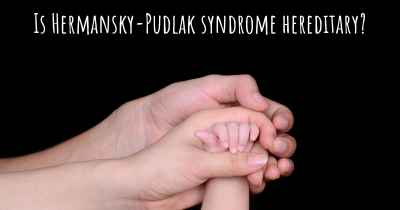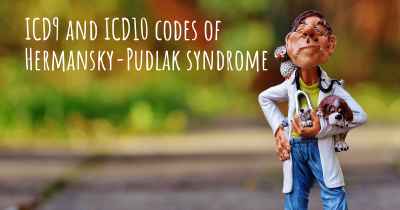What is the life expectancy of someone with Hermansky-Pudlak syndrome?
Life expectancy of people with Hermansky-Pudlak syndrome and recent progresses and researches in Hermansky-Pudlak syndrome

Hermansky-Pudlak syndrome is a rare genetic disorder characterized by albinism, vision problems, and bleeding tendencies due to platelet dysfunction. The life expectancy of individuals with Hermansky-Pudlak syndrome can vary depending on the severity of the condition and associated complications. While there is no specific data on life expectancy, it is important to note that this syndrome can affect multiple organs and systems, potentially leading to serious health issues. Regular medical care, management of symptoms, and early intervention for complications are crucial in improving the quality of life and potentially extending the lifespan of individuals with Hermansky-Pudlak syndrome.
Hermansky-Pudlak syndrome (HPS) is a rare genetic disorder that affects various organs and tissues in the body. It is characterized by a combination of symptoms including albinism, bleeding disorders, and lung complications. The severity and progression of the syndrome can vary widely among individuals, making it difficult to provide a definitive life expectancy for someone with HPS.
Albinism is a common feature of HPS, resulting in reduced pigmentation of the skin, hair, and eyes. This can lead to increased sensitivity to sunlight and vision problems. The degree of visual impairment can vary, ranging from mild to severe, and may require visual aids or corrective measures.
Bleeding disorders are another hallmark of HPS. Individuals with HPS may experience prolonged bleeding or easy bruising due to platelet dysfunction. This can result in nosebleeds, excessive bleeding during surgeries or dental procedures, and heavy or prolonged menstrual periods in females. While these bleeding issues can be managed with appropriate medical interventions, they can still pose challenges and increase the risk of complications.
Lung complications associated with HPS can significantly impact the quality of life and overall prognosis. The most common lung manifestation is pulmonary fibrosis, a condition characterized by the formation of scar tissue in the lungs. This can lead to progressive respiratory symptoms such as shortness of breath, coughing, and reduced lung function. The severity and progression of pulmonary fibrosis can vary, and it is a major determinant of life expectancy in individuals with HPS.
It is important to note that HPS is a heterogeneous disorder, meaning there are several subtypes with varying clinical presentations and outcomes. Some subtypes of HPS are associated with more severe symptoms and complications, while others may have milder manifestations. Therefore, it is crucial to consider the specific subtype of HPS when discussing life expectancy.
While there is no cure for HPS, management focuses on treating the specific symptoms and complications that arise. This may involve regular monitoring of lung function, providing supportive care for bleeding disorders, and addressing visual impairments. Additionally, individuals with HPS should receive comprehensive medical care to address any associated health issues and optimize their overall well-being.
Given the variability in symptom severity and progression, it is challenging to provide a precise life expectancy for individuals with HPS. Some individuals may have a relatively stable disease course and normal life expectancy, while others may experience more rapid disease progression and reduced life expectancy. It is essential for individuals with HPS to work closely with a multidisciplinary healthcare team to manage their symptoms, monitor disease progression, and receive appropriate interventions.
In conclusion, Hermansky-Pudlak syndrome is a rare genetic disorder characterized by albinism, bleeding disorders, and lung complications. The life expectancy of someone with HPS can vary widely depending on the specific subtype, severity of symptoms, and progression of associated complications. Regular medical care, symptom management, and monitoring are crucial for optimizing the quality of life and overall prognosis of individuals with HPS.








